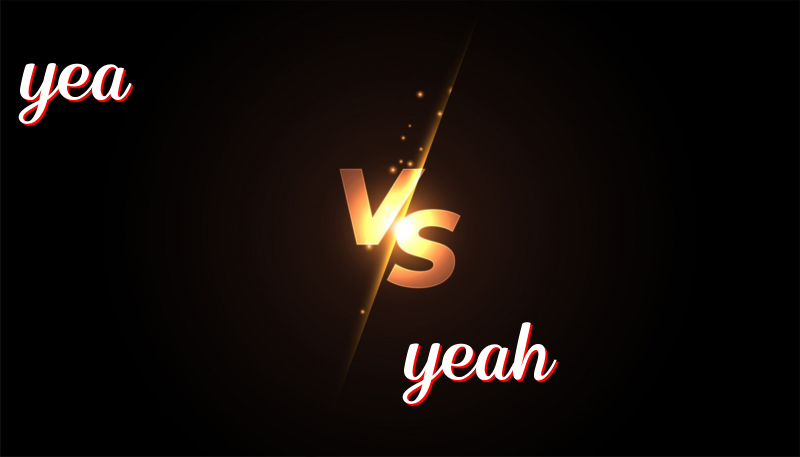Understanding the Distinctions Between Yea and Yeah
Yea vs. Yeah
The words “yea” and “yeah” might seem similar, but they have different histories and uses. Let’s learn how each word is used and how you can remember the difference.
History
Yea: The word “yea” is very old. People used it hundreds of years ago to mean “yes.” You might see it in old books or hear it in special votes, like in meetings.
Yeah: “Yeah” is a newer word. It’s a relaxed, informal way of saying “yes” that people use in everyday talks.
How to Use
Yea: Use “yea” in formal settings, like when voting or in old-style writing. Example sentences:
- The group said “yea” to the new rule.
- Read the line aloud: “Yea, though I walk through the valley…”
- There were ten “yea” votes and two “nay” votes.
- In the play, the king says “yea” to show agreement.
- The council all said “yea” to the changes.
Yeah: Use “yeah” in everyday, casual conversations. Example sentences:
- “Do you want some ice cream?” “Yeah, I do!”
- “Yeah, I’ll come to the party tonight.”
- “Did you finish your homework?” “Yeah, I did.”
- “Yeah, that movie was really good!”
- “Are you ready to go?” “Yeah, just a minute.”
Trick to Remember the Difference
Remember this: “Yea” is for formal uses and old tales. “Yeah” is for chats with friends. Think of “yeah” as a fun way to say “yes” because it has an extra “h” like you’re having a happy chat!
Summary
In short, use “yea” when you want to sound official or historical. Use “yeah” for easy, everyday conversations.

Leave a Reply
You must be logged in to post a comment.